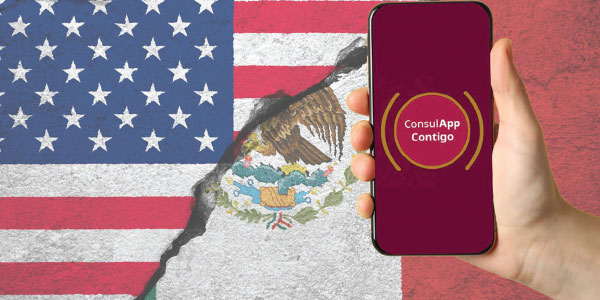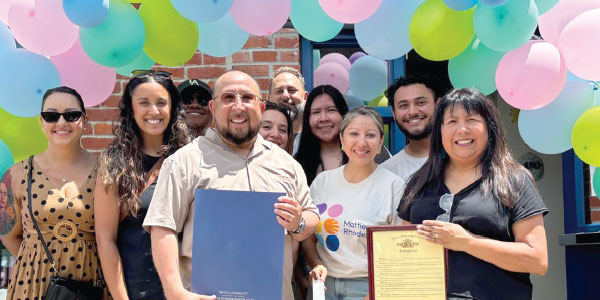
Even before the coronavirus pandemic, many of us were already living in our own distinct bubbles: private universes filled with the people, places and ideas that define us.
Now, though, those bubbles have become far more concrete. The lockdown and social distancing have made of our bubbles our entire world. Right now, I’m writing from my own little bubble.
Our bubbles are the social spaces we’ve created in order to survive the pandemic: small groups of people living in the same place who continue to maintain close contact. Everybody else is kept away. Of course, the rules of the country we live in and the number of people infected in our vicinity determine how penetrable or impenetrable our bubbles are. But nearly everyone has a bubble, whatever its precise contours.
One of the first politicians to use the term was Jacinda Ardern, the prime minister of New Zealand. Unlike U.S. President Donald Trump, who was slow to act to control the virus, Ardern put strict measures in place in late March, when there were very few cases in New Zealand and no related deaths. Citizens were forced to create their own bubbles amid a severe lockdown — and it worked: Today, the nation claims to have the illness well under control.
As New Zealand’s situation has improved, Ardern has allowed people to increase the size of their bubbles.“You can expand your bubble a small amount to bring in close family, isolated people or caregivers,” Ardern said in a speech in late April.
But New Zealand has promised to stay vigilant: Like Australia, the country has continued to keeps its border closed to ensure that its bubbles don’t pop (though there is talk of creating a special “travel bubble” between the two nations).
Outsiders, by definition, shouldn’t be allowed inside your bubble. But abiding by this rule for weeks on end is nearly impossible. We all need to go to the grocery store or the pharmacy, or to go outside for a walk. And if we’re an essential worker, we have to go to work.
That’s why most of our bubbles aren’t perfect, and why they can burst at any moment. Just one person venturing outside can put everyone inside at risk. If you fail to wear a face mask or keep your distance, a casual encounter with a friend or neighbor — on the street, at work or on the subway — can lead to the infection of every person inside your bubble.
More worryingly, the virus can walk through our front doors via the packages and groceries delivered to us, the people who stop by to fix the internet or the plumbing, and the friends of our children, whom we just can’t bring ourselves to keep out. To paraphrase the oft-quoted line from the Guatemalan writer Augusto Monterroso: When we woke up, the virus was still there.
A recent New York Times article by Heather Murphy described the difficulties of negotiating interactions within and between bubbles. “The inhabitants of two or more bubbles get exclusive, agreeing to see one another while maintaining separate dwellings,” Murphy writes. “Some people have practical reasons for this: They might agree to share home schooling or babysitting with neighbors, for example.” According to the article, things can get complicated when one person within a bubble occasionally leaves its confines to visit his or her significant other. Such behavior can lead to an ultimatum from those within the bubble: either stay inside, or leave for good.
As more countries lift their lockdowns and start to reopen their economies, our bubbles will inevitably expand. “I don’t think we are going to see huge arenas full of people for a long time,” Eric Garcetti, the mayor of Los Angeles, told The Times recently. “I do think you can have games without audiences. We watch much of our sports through television. I think you can create some bubbles. We are hungry for it.”
Our 21st-century world — global, cosmopolitan and interconnected, with porous borders and broad cultural exchange among countries — has broadened our social horizons. The spread of the coronavirus has done the opposite, forcing us to isolate ourselves in small communities.
If we look closely, this confinement also offers us opportunities to open up. By setting firm social boundaries and ensuring that our bubbles don’t pop, we can help keep other people safe and contribute to a global cause: eradicating the virus. Today, staying isolated means showing our solidarity with the wider world.
But that doesn’t mean we can greatly expand our bubbles, regardless of whether we wear face masks and keep our distance from one another. Only the most daring politicians have allowed schools to reopen, and there is an ongoing and heated debate over what must be done to ensure that people can fly without fear of infection. Some industries — including transportation (airlines, cruises) and entertainment (casinos, concert halls) — whose business models depend on getting as many people as possible to gather in one place, will have to be radically transformed if they want to survive until a vaccine is produced.
Now that some countries are starting to take tentative steps toward a new and infectious reality, two things are becoming increasingly clear: We can’t live in isolation forever, and we haven’t yet learned to deal with the new risks we’re facing. Unfortunately, we can’t pop our bubbles just yet.
Un mundo de burbujas
Desde antes de la pandemia del coronavirus, muchos de nosotros vivíamos en una especie de burbuja: un universo contenido de gente, lugares e ideas que nos define. Pero la metáfora de la burbuja ha cobrado una dimensión más real en este momento: estamos obligados al confinamiento y la distancia social, y la burbuja social y física en la que habitamos se ha convertido en nuestro único mundo. Este término se ha convertido en parte del vocabulario de la pandemia. Ahora mismo les escribo esto desde la mía.
La “burbuja” es el espacio que nos hemos creado para sobrevivir la pandemia: grupos pequeños que habitan el mismo lugar y mantienen contacto. El resto de las personas, se mantienen afuera. La rigidez de nuestra burbuja depende, por supuesto, de las reglas del país donde vivimos y también del grado de contagio que exista a nuestro alrededor. Pero la burbuja es una realidad casi universal.
Una de las primeras figuras políticas que empezó a usar el término es la primera ministra de Nueva Zelanda, Jacinda Ardern. A diferencia de la lentitud y complacencia del presidente Donald Trump en Estados Unidos, Ardern tomó estrictas medidas cuando la epidemia apenas comenzaba: se obligó a los neozelandeses a crear sus propias burbujas, un cierre serio. Y funcionó. Hoy, ese país-archipiélago asegura tener controlada la enfermedad.
Poco a poco, Ardern ha ido abriendo y extendiendo las burbujas dentro de la nación. “Pueden expandir su burbuja un poco para incluir a otros miembros de su familia, a gente que está sola y a cuidadores”, dijo en un discurso en abril. Pero Nueva Zelanda ha prometido mantener la vigilancia: al igual que Australia, no quieren que se revienten sus burbujas (sin embargo, hay discusiones sobre crear un tipo de “burbuja de viaje” especial entre las dos naciones).
Las burbujas personales o familiares, por definición, no aceptan a gente de fuera. Son, digamos, burbujas cerradas. Pero es casi imposible mantener una burbuja sin contacto con el exterior durante semanas. Hay que comprar comida, ir a la farmacia, salir a caminar y, los trabajadores esenciales, desplazarse para trabajar.
Por eso casi todos vivimos en burbujas imperfectas que, en cualquier momento, pueden reventar. Si uno de los miembros de una burbuja sale de ella, crece el peligro de contagio para todos los que están adentro. Un encuentro casual —en la calle, el trabajo o en el metro— sin mascarilla ni distancia con el amigo del vecino de tu primo puede culminar en la infección de toda tu burbuja.
Pero, en realidad, el peligro está en la misma puerta de tu casa: en los paquetes y comida que recibes, en las personas que tienen que entrar para realizar algún trabajo —desde técnicos del cable e internet hasta plomeros— y en los amigos de tus hijos que no te atreves a rechazar. Parafraseando el superparafraseado cuento de Augusto Monterroso, cuando despertamos el virus todavía seguía allí.
Un reciente artículo de The New York Times describe las complicadas negociaciones que existen dentro y entre burbujas. “Los habitantes de dos o más burbujas pueden tener exclusividad y acordar verse entre sí aunque vivan en casas separadas”, escribió la periodista Heather Murphy. “Y hay razones prácticas para esto: quizás ayudan con la escuela (virtual) de los niños y los vecinos colaboran para cuidarlos”. Las cosas se complican, describe el artículo, cuando hay ocasiones en que un novio o novia sale de su burbuja para visitar a su pareja. Esto podría resultar en un ultimátum de los habitantes de la burbuja: te quedas o te vas.
Conforme más países experimentan con el fin del confinamiento y un regreso a ciertas actividades económicas, inevitablemente tendremos que abrir un poco más nuestras burbujas. “No creo que vamos a ver grandes estadios llenos de gente por mucho tiempo”, dijo en una entrevista el alcalde de Los Ángeles, Eric Garcetti. “Creo que podemos tener juegos sin audiencias. Podemos ver nuestros deportes por la televisión. Creo que podemos crear algunas burbujas. Nos urge hacerlo”.
El mundo del siglo XXI —global, cosmopolita, interconectado, con fronteras porosas e intercambios culturales entre países— nos había ayudado a expender nuestros límites y enriqueció nuestros horizontes sociales, pero el coronavirus nos ha forzado a formar pequeñas burbujas, a aislarnos. Sin embargo, ese confinamiento, visto con atención, debe seguir siendo abierto: al vivir de manera rigurosa en nuestras burbujas ayudamos a los otros, contribuimos a una causa global: erradicar el virus. Ahora, aislarse también implica pensar en el mundo, en actuar con solidaridad.
Por eso, al menos por ahora, es impensable el concepto de burbujas masivas, incluso con termómetros en las entradas y el uso de cubrebocas. Sólo los políticos más temerarios se han atrevido a proponer reabrir escuelas, y hay un vigoroso debate sobre los cambios que deben hacerse para volar sin infectarse en un avión. Industrias como las del transporte —aerolíneas, cruceros— y el entretenimiento —casinos y conciertos—, cuyo modelo de negocio ha sido meter a la mayor cantidad de gente en un espacio, tendrán que transformarse radicalmente para sobrevivir hasta que haya una vacuna.
Mientras vamos reabriendo los países a una nueva y contagiosa realidad, dos cosas están muy claras: no podemos vivir permanentemente aislados y tenemos que aprender a manejar los nuevos riesgos. Pero lo que no podemos hacer, en este momento, es reventar nuestra burbuja.










